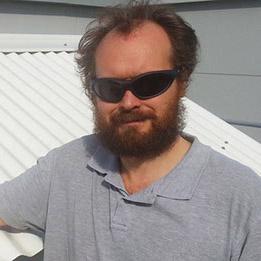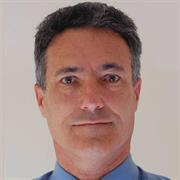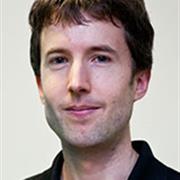Buildings in Australia represent almost 25 per cent of the nation’s carbon dioxide emissions and over 50 per cent of electricity demand; yet, argues Geoff Smith, Emeritus Professor in Applied Physics at UTS, our buildings actually have the potential to be transformed into carbon zero emitters, or even become carbon positive through the implementation of advanced technologies.
We’ve always focused on research with impact, partnering with some of the world’s biggest industry players and creating new energy efficient building materials and products.
— Geoff Smith, Emeritus Professor in Applied Physics at UTS
“Smart materials and energy efficient products and processes continually transform the way residential and commercial buildings are conceived, fabricated and rated,” explains Smith, who has been based at UTS since 1973 and is globally renowned for his contributions to science and technology in energy, coatings and green nanotechnology.
“We’ve always focused on research with impact, partnering with some of the world’s biggest industry players and creating new energy efficient building materials and products,” he says.
The impact of these innovations, which include heat control, cool paints, roofing, solar cells, windows, skylights, daytime fluorescent signage and new lighting and daylighting systems, continue to be felt in the building industries in Australia and around the world.
Research from Smith’s lab has resulted in new performance assessment methodologies, ‘star ratings’ systems, and building codes and standards – all aimed at improving human comfort, saving energy and helping mitigate the effects of the climate emergency.
Today, one of Smith’s continuing roles is Chair of the Australian Standards Committee for Skylights and Roof Glazing. His colleague, a technical committee member of the Australian Fenestration Rating Council, Peter Lyons, couldn’t speak more highly of Smith’s approach and his team’s overall contribution to the industry.
“UTS research has been fundamental to the industry as a whole, particularly the development of ratings and testing methodologies that are leading to emerging industry standards, better product specifications, and targeted marketing,” explains Lyons.
Beyond Australia, international colleague Stephen Selkowitz, Chief Adviser and former Head of the Windows Research Group at Lawrence Berkeley National Laboratory at the University of California, says that UTS's central role in supporting the Australian glazing, skylight and paint industries, and the engineers, architects and consultants who rely on these products, is well established.
“UTS research has also contributed to the deliberations of the National Fenestration Rating Council, which is responsible for influencing energy efficiency certification and the labelling of windows, doors and skylights in the US,” explains Selkowitz.
In one hugely successful project, in 2013, Smith’s team created a world-first method to measure the energy and performance of complex-glazed skylights with Skydome Industries (now Skydome Skylights Systems) and Regent Skylights.
Building on a previous collaboration with polymer component suppliers York Plastics, and speciality chemical manufacturers, the team’s innovative method to improve glazing on acrylic sheets (commonly used in skylights) is now an essential part of the Window Energy Rating Scheme for Skylights (WERSfS), approved by the Skylight Association of Australia.
Skydome Managing Director, Steve Lynch, is full of praise for their efforts. “Being able to access this glazing material data was critical to enabling our industry to complete WERSfS, which is now referenced in the National Building Code,” he says.
In another project of note, in 2016, Smith’s team applied similar methods to blinds and contributed to the creation of an energy rating system for window coverings.
“The practical application of UTS’s advanced optical and material science concepts has helped change the culture of our industry and its impact and regard within the wider Australian community,” continues Lynch, who says that working with UTS allowed Skydome to, “evolve from a basic manufacturer of metal and polymer products, to a supplier of world-leading daylighting products with well-defined energy saving characteristics.”
UTS’s research has also led to the fabrication of new solar control laminated safety glass for windows. In association with BASF, the world’s largest chemical producer, and glass producers Solutia and G James, the team used both fluorescent dyes and nanoparticles in the lamination layer of safety glass to block energy-rich near-infrared invisible solar radiation (about 50 per cent of the incoming solar heat).
Subsequent innovations in double-glazed windows has resulted in the growth of advanced solar control glazing, which continues today. Many of these high-performance windows replicate products by Pilkington/NSG, who worked with UTS in 2009 to optimise solar control windows. They are still considered the best on the market.
Paint has been another key focus for the team. Back in the 2000s, UTS’s optical polymer expertise led to Australia’s first cool white paints (developed by SkyCool), and the first coloured paints with unprecedented solar control and thermal properties (with BASF). Then, between 2014 and 2015, UTS developed an innovative method to evaluate a new ‘cool’ paint capable of reflecting vast quantities of solar radiation.
“The evaluations used energy data, advanced modelling and rooftop temperature measurements to prove that applying the paints improved comfort and energy savings from lower air conditioning demand,” explains Smith.
According to Skycool’s CEO, Rex Lehmann, the demonstrated benefits helped the firm expand in Australia and Asia. “Airports, factories, shopping centres and warehouses with over 600,000 square metres of roof are now enjoying the impacts of our paints and UTS’s work,” he says.
The evaluations also revealed significant benefits for roof durability because of the reduced expansion and contraction of materials. “In some instances, like Melbourne Airport, this has been reported to be of greater financial benefit, exceeding $2M, than the energy savings achieved,” continues Lehmann.
Smith says the obvious next step was to undertake computer simulation and scale models with CSIRO which, he says, revealed further benefits. “When we combined it with ventilation improvements, the cool paints halved insulation needs. This led to updated star ratings for roof design (NatHERS),” he says.
Encouraged by their success, UTS’s scientists then turned to the creation of paints with ‘super-coolness’. They were world-first in demonstrating that an open cool surface with 96 per cent reflectivity could stay well below ambient temperature even on the hottest day. This was recognised by the New York-based World Technology Network in 2015 when the UTS team was named World Technology Environment Award winner.
Smith says their super-coolness research, backed by the NSW Government and SkyCool, continues to have a commercial impact. He was excited recently to see Stanford University launch a company utilising the same supercool surface materials first demonstrated at UTS in 2016.
“Our lab, led today by my colleagues Angus Gentle and Matthew Arnold, continues to work on cutting-edge science that will have lifestyle, health, energy and productivity benefits for buildings around the world,” Smith continues.
“Our latest thermal and optical advances, now being prepared for publication, are based on new applied and basic science. I believe that these advances will shift current energy and environmental paradigms significantly at a time when we urgently need to re-establish harmony with our environment.”
Research team
-
Emeritus Professor, Faculty of Science
-
Lecturer, School of Mathematical and Physical Sciences
-
Associate Head of School (Research), School of Mathematical and Physical Sciences
-
Associate Professor, School of Mathematical and Physical Sciences
-
Abbas MaaroofPostdoctoral Fellow
-
Supriya PillaiPostdoctoral Fellow
-
Alex RadchiPostdoctoral Fellow
-
Igor SkryabinPostdoctoral Fellow
Additional team members
- PhD and honours students
Faculty and research centre
- Faculty of Science
- Institute of Nanotechnology
Funded by
- Australian Research Council
- multiple industry partners




